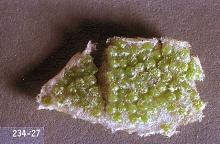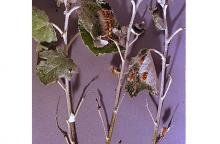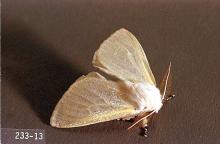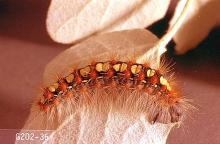Leucoma salicis
Pest description and crop damage The adult moth is satiny white. Larvae are approximately 2 inches long when grown and reddish brown with white patches on top and tufts of hairs along the sides. They can defoliate cottonwood, poplar, and willow seriously. They occasionally attack oak and aspen.
Biology and life history The insect overwinters as a larva in a small silken cocoon attached to the trunk or branch of the host tree. The larva becomes active and feeds after leaves have fully formed in the spring. After pupation, the adult moth emerges in midsummer. The adult moths are attracted to lights. The females lay eggs in masses on host plants, often on the leaves but also on bark. After hatching, the young larvae feed until fall, then hibernate. There is one generation per year.
Scouting and thresholds Watch for signs of skeletonizing.
Management-biological control
See:
Biological Control of Nursery Pests
Management-cultural control
Larvae and pupae may be removed from affected leaves. Remove heavily infested twigs.
Management-chemical control
See:
Chemical Control of Nursery Pests
Apply when larvae are present and feeding.
For more information
Johnson, W.T. and H.H. Lyon (1991), Insects That Feed on Trees and Shrubs, 2nd ed., Cornell University Press (p. 158).





